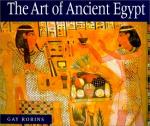|
This section contains 806 words (approx. 3 pages at 300 words per page) |

|
Kinship Systems. Scholars have speculated, from the earliest attempts to read hieroglyphs, on the Egyptian kinship system. Much has been written about the importance of matriarchy in ancient Egypt, which modern Egyptologists no longer believe to be true. In fact, recent research has shown that the Egyptian kinship system was not vastly different from later European and American kinship systems. The basic relationships between mother, father, and child are the same in ancient as in modern times. The real difference that led earlier scholars astray was the way kinship terms, such as brother or sister, were used affectionately between lovers or spouses. This use suggested to earlier Egyptologists that incestuous marriages were common.
Terms. Basic kinship terms in ancient Egyptian are mut (mother), jetey (father), sa (son), sat (daughter), sen (brother), and senet (sister). German scholar Detlef Franke points out that these...
|
This section contains 806 words (approx. 3 pages at 300 words per page) |

|




